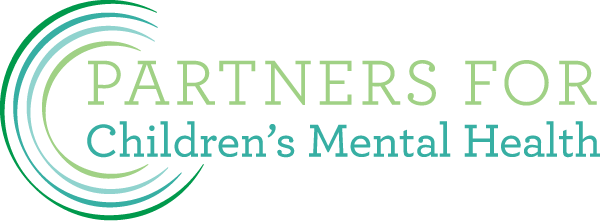Yes. Zero Suicide has created a document to assist: Suicide Care Pathway Coding for Primary and Behavioral Health Care.
FAQ: Youth Suicide Prevention in Primary Care
About Screening
How often do you recommend screening patients for suicide risk?
We recommend screening patients for suicide risk at every visit due to the fluid nature of youth suicidality and impulsivity. We understand this is a high benchmark. We work with clinics to meet them where they are with the eventual goal of screening at all visits or as many visits as possible.
Do clinics/providers screen for suicide risk only if a PHQ9 (or other depression screen) is positive?
We recommend using a suicide-specific screening instead of taking a stepped approach to screening with an initial depression screening. Suicidal thoughts and behaviors often occur outside of depressive symptoms/disorders.
Why not just use the PHQ-9 to screen for suicide risk?
We encourage suicide-specific screening tools as suicidal thoughts and behaviors can occur outside of depressive symptoms/disorders. Review this comparison of common screening tools.
Can our clinic use the PHQ-A (or other suicide screening tool) instead of the ASQ?
PCMH encourages clinics to adopt validated suicide-specific screening tools. Thus, we universally recommend use of the asQ to screen for suicide. The PHQ-A contains non-validated suicide screening questions. However, we understand that quality improvement projects start in different places for different clinics. If your clinic would like to initially implement the Youth Suicide Prevention Care Pathway with a non-validated suicide screening tool with the potential to later move to a validated tool, we can support your implementation plan.
What is the difference between suicide screening and suicide assessment?
- Suicide screenings are standardized protocols used to identify individuals who may be at risk for suicide. Suicide screening tools are typically brief and narrow questionnaires used for early identification of individuals potentially at risk for suicide. Suicide screenings are not definitive in diagnostic nor definitive indications of a condition and disorder.
- Suicide assessments are longer and more comprehensive questionnaires focused on an individual’s functioning across multiple domains intended to increase a providers understanding of an individuals risk factors, protective factors, and warning signs. Suicide assessments are conducted to confirm suicide risk, estimate the immediate danger to the patient, and determine a course of treatment.
Will asking the questions every time lead to screening fatigue?
The benefits of screening at every visit outweigh the risk of screening fatigue. We have seen that youth patients generally accept being asked about suicide by their providers. You can show youth patients and their families your commitment to their overall health and decrease screening resistance by saying statements like “Your mental health care is just as important to me as your physical health and, because of this, [our clinic/I] have decided to ask you questions about this routinely.”
Could screening a youth for suicide increase their risk of suicidal behavior?
No, this is a pervasive myth that exists in our culture. In fact, screening for suicide reduces stigma and allows individuals to access help, rethink their options, and share their stories with others.
Some parents are worried about screening their young children for suicide. How should my clinic approach this?
Generally this is not a problem we encounter. However, if your clinic is concerned about this, we recommend making suicide screening a clinic policy and providing parents with a letter to let them know about the change in your office. We provide sample language for these types of letters in our training materials.
How can we help ensure youth answer the suicide screening questions accurately?
To increase a youth’s willingness to openly and accurately answer questions on suicide screens, we recommend clinics allow space for youth to speak privately and directly to their providers, without guardians present. Also, providers who ask screening questions confidently, directly, and without judgement are viewed positively by youth, which increases their willingness to answer questions accurately.
About asQ
At what age do you recommend screening patients for suicide risk?
It depends. We recommend clinics begin universal screening at 10 years old.* However, we know that youth at younger ages are attempting and dying by suicide. For youth 8 and up who present with a chief psychiatric complaint, we recommend targeted screening. If suicidal ideation is suspected for youth under the age of 8, providers should immediately conduct a thorough suicide assessment.
*The asQ is validated for youth 10 years old and up.
How long does the asQ take to administer?
It takes about 20 seconds to administer the asQ. In our experience, more than 90% of patients will screen negative on the asQ and this will be the only time commitment to the pathway for those visits. For more information on the asQ screening and their toolkit please visit the NIMH website.
Is the asQ available in languages other than English?
The asQ screener is available in over 13 languages. For more information on the asQ screening and their toolkit please visit the NIMH website.
In what format can the asQ be administered?
We recommend providers verbally ask the screener questions to the youth directly, confidently, and nonjudgmentally. However, we understand screening practices vary from clinic to clinic. Some practices have incorporated the asQ screener as a part of confidential iPad screening while the youth are waiting to be seen. Other clinics screen using a paper form youth can fill out without parent input. If your clinic screens patients prior to their clinic visit, we recommend creating a process to review their responses as they come in, in case of positive screening. For more information on the asQ screening and their toolkit please visit the NIMH website.
About Care Pathway
How long does the care pathway take to administer?
Anywhere from 5-35 minutes, depending on the patient’s screening result and assessed risk level. In our experience, around two-thirds of patients screening positive on the asQ will fall into the low risk category. The time it takes providers to conduct the suicide assessment for these patients typically ranges from 5-15 minutes, depending on provider skill and familiarity with the patient and assessment tool. Similarly, around one-third of patients screening positive on the asQ will fall into the intermediate or imminent risk categories. These patients will require further management which can take up to another 15-20 minutes to complete.
Who, at our clinic, can participate in the care pathway?
Suicide prevention is everyone’s business. We encourage providers, nursing staff, EHR specialists, billing and coding specialists, and any other clinic champions interested in suicide prevention to participate! Staff members are frequently in positions to observe changes in behavior or hear patients express suicidal ideation.
I noticed that lethal means safety is on the care pathway. What is that?
Lethal means safety refers to reducing a suicidal individual’s access to highly lethal means, like securing medications and weapons around the home, until the suicide crisis is resolved. Because many suicide attempts occur with little planning during a short-term crisis, keeping highly lethal means away from a person experiencing a suicidal crisis is imperative to saving their lives. While we do discuss lethal means safety as a component of the care pathway training, we also recommend every provider take the online course Counseling on Access to Lethal Means (CALM), available for free on the SPRC or Zero Suicide websites, to deepen their learning.
About Implementation
What is the time commitment of the trainings?
There are two one-hour trainings on the Youth Suicide Prevention Care Pathway. Additionally, to receive MOC Part IV, PI-CME or PI-MOC you will be required to participate in at least two consultation/implementation meetings, along with monthly data reporting for at least six months.
Can we adapt the care pathway to our practice context?
Absolutely. The implementation support PCMH provides meets clinics where they are in their journey to increase suicide screening rates. The training components of the project are standard, but the workflow development and implementation plan can look different at every clinic. Please reach out to info@pcmh.org to discuss clinic-specific implementation considerations.
Who, at our clinic, should participate in the two training sessions?
During the pre-training consultation, we will discuss who at the clinic will be directly involved in carrying out the components of the Youth Suicide Prevention Care Pathway. These individuals will need to take the two training sessions.
My clinic has integrated behavioral healthcare providers. Do we still qualify for this initiative?
Yes, behavioral health providers can be integrated into the care pathway for patients who present with risk for suicide.
Can school-based health centers become involved?
Yes! PCMH is excited to bring this work to school-based health centers.
Are there benefits to providers/practices for participating in this program?
Yes! Qualifying pediatricians may earn Quality Improvement 4 Maintenance of Certification (MOC part IV) through the American Board of Pediatrics. Qualifying Family Medicine providers, NPs, and PAs can earn PI-CMEs through the American Academy of Family Practice or PI-MOC through the American Board of Family Medicine.

OTHER QUESTIONS?
If you have other questions related to this initiative that aren’t answered above, please send us an email at info@pcmh.org.
